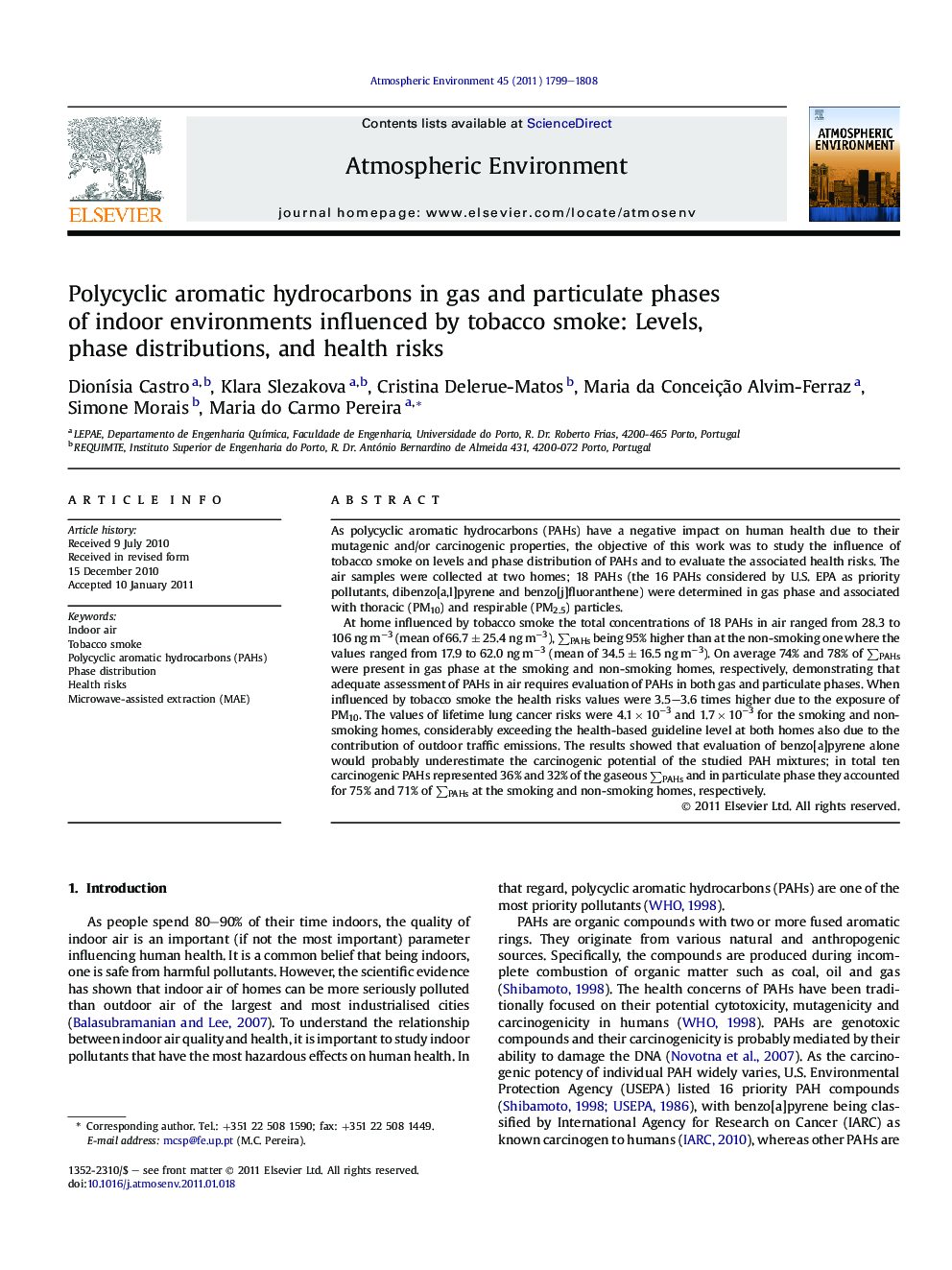| کد مقاله | کد نشریه | سال انتشار | مقاله انگلیسی | نسخه تمام متن |
|---|---|---|---|---|
| 4440074 | 1311046 | 2011 | 10 صفحه PDF | دانلود رایگان |

As polycyclic aromatic hydrocarbons (PAHs) have a negative impact on human health due to their mutagenic and/or carcinogenic properties, the objective of this work was to study the influence of tobacco smoke on levels and phase distribution of PAHs and to evaluate the associated health risks. The air samples were collected at two homes; 18 PAHs (the 16 PAHs considered by U.S. EPA as priority pollutants, dibenzo[a,l]pyrene and benzo[j]fluoranthene) were determined in gas phase and associated with thoracic (PM10) and respirable (PM2.5) particles.At home influenced by tobacco smoke the total concentrations of 18 PAHs in air ranged from 28.3 to 106 ng m−3 (mean of 66.7 ± 25.4 ng m−3), ∑PAHs being 95% higher than at the non-smoking one where the values ranged from 17.9 to 62.0 ng m−3 (mean of 34.5 ± 16.5 ng m−3). On average 74% and 78% of ∑PAHs were present in gas phase at the smoking and non-smoking homes, respectively, demonstrating that adequate assessment of PAHs in air requires evaluation of PAHs in both gas and particulate phases. When influenced by tobacco smoke the health risks values were 3.5–3.6 times higher due to the exposure of PM10. The values of lifetime lung cancer risks were 4.1 × 10−3 and 1.7 × 10−3 for the smoking and non-smoking homes, considerably exceeding the health-based guideline level at both homes also due to the contribution of outdoor traffic emissions. The results showed that evaluation of benzo[a]pyrene alone would probably underestimate the carcinogenic potential of the studied PAH mixtures; in total ten carcinogenic PAHs represented 36% and 32% of the gaseous ∑PAHs and in particulate phase they accounted for 75% and 71% of ∑PAHs at the smoking and non-smoking homes, respectively.
Research highlights
► Tobacco smoke increased the concentrations of PM10 and PM2.5 by 260% and 290%.
► Total concentration of 18 PAHs was 95% higher when smoking.
► Correct PAHs assessment in air requires evaluation of PAHs in gas and particles.
► Lifetime lung cancer risk values considerably exceeded health-based guideline level.
Journal: Atmospheric Environment - Volume 45, Issue 10, March 2011, Pages 1799–1808